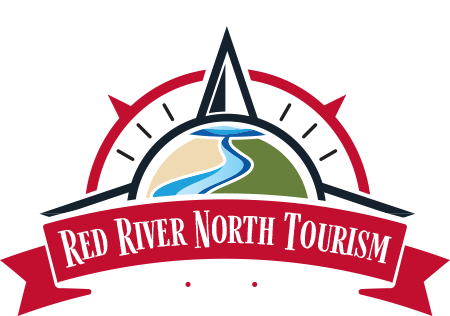SHARE
Take a Walk on the Wild Side
By Bob Turner
Looking to get away from it all, and spend a couple of hours close to nature, in a unique setting, enjoying the sounds and sights of a wild, untouched part of Manitoba? Then take a walk on The Brokenhead Wetland Interpretive Trail.
This self-guided nature trail features 1.5 km. of cedar boardwalk that winds through a balsam fir forest, a white cedar bog, and a rare type of peatland known as a calcareous fen. The trail is located roughly 45 km north of Selkirk (an hour’s drive north of Winnipeg), on Highway 59. More specifically, the trail is just north of Brokenhead Ojibway Nation near Scanterbury. It is on the west side of Highway 59, adjacent to the Brokenhead Wetland Ecological Reserve. This is a culturally significant part of the Lake Winnipeg watershed, and is home to 28 of Manitoba’s 37 native orchid species, 8 species of carnivorous plants, and many other rare plants.
The Interpretive Trail is the centerpiece of the ecological reserve, which is a protected area of rare beauty being preserved through cooperation between First Nations, local advocates, and government, and operated by Debwendon Inc.
Debwendon Inc. is a non-profit Manitoba corporation, formed in 2007 with the following as its objectives:
to promote and preserve the Brokenhead Wetland Ecological Reserve
raise public awareness of the historic cultural connection between the Brokenhead Ojibway Nation and the Brokenhead Wetland
construct and maintain over the long term an interpretive trail adjacent to the Wetland and,
raise funds toward these ends
There are rest stops along the way
The word “debwendon” means “trust” in Ojibway.
While a boardwalk in a sensitive ecological reserve may seem somewhat out of place and contradictory with its goals, its purpose was to ensure long-term protection and viability of the wetland. The controlled public access, combined with an abundance of interpretive signage, is designed to help build public understanding and appreciation for the uniqueness of the wetland.
The early bird… My wife and I had read about the Brokenhead Trail prior to moving to Red River North, so we were quite excited to attend Discovery Day, the third annual open house and fundraiser held by Debwendon in June of this year to kick off the season’s activities. In fact, we were so excited that we showed up a week early. (Note to self: check dates!)
No matter, we had a beautiful sunny day to walk the boardwalk and talk to a number of knowledgeable people about the wetlands, including Carl Smith.
Smith is the chair of Debwendon Inc. and remembers walking through the wetlands as a child, with his parents and grandparents.
Carl has a very deep, personal attraction to the area. The late Lawrence Smith, Carl’s father, chose the name Debwendon, in recognition of the trust between the various partners in the project. The whole concept of debwendon has as its goal, the preservation of the wetlands for future generations. Carl says they have a commitment to pass on the knowledge they have of the wetlands to the general public and the next generation. The cultural connection between the Brokenhead Ojibway Nation and the wetland is a deep one, with the wetland having been a sacred area used by the local Ojibway for over 300 years to sustain them and for sacred ceremonies.
In order to fully appreciate how special this development is, we must look back to the days before the late 1990’s when the development of parks and recreational areas in Canada, including here in Manitoba, was carried on without consultation with First Nations, or consideration for the cultural and historical significance of land areas to them. The result was negative consequences for the health of ecosystems and traditional practices.
Fortunately, around the turn of the century, the establishment of government’s legal obligation and duty to consult with First Nations began to be reflected in the whole approach to park areas, and the Province began to work with them co-operatively in the planning, development, and management of parks and protected areas.
The Brokenhead Wetland was declared an ecological reserve in 2005. Soon afterwards, members of Brokenhead began an effort to build a trail through the site that would maintain and increase access for people in the community and allow elders to pass on their traditional knowledge of the wetlands to the next generation.
With support from the Province, a working group was formed, comprised of Brokenhead Ojibway Nation, NOCI (Native Orchid Conservation Inc), and an agency known as Manitoba Model Forest. Debwendon came about as a result.
These wetlands are home to 28 native Manitoba orchids (including Lady’s Slippers, Dragon’s Mouth, and Adder’s Mouth), 8 carnivorous plants, and 23 other rare species. This is mainly as a result of the water in the wetlands having a slightly higher PH content, which means it’s richer in mineral content, which allows for a wide diversity of plants not found elsewhere in the province. The Brokenhead Wetland Interpretive Trail allows Manitobans an excellent opportunity to enjoy this diversity.
Guided tours of the trail are available Wednesday through Saturday until the end of August. Or you can take the self-guided tour from 8 am to 8 pm seven days a week. Visit debwendon.org for further information on another Red River Reason.
Whatever the season, there’s always a reason to spend time in Red River North!

